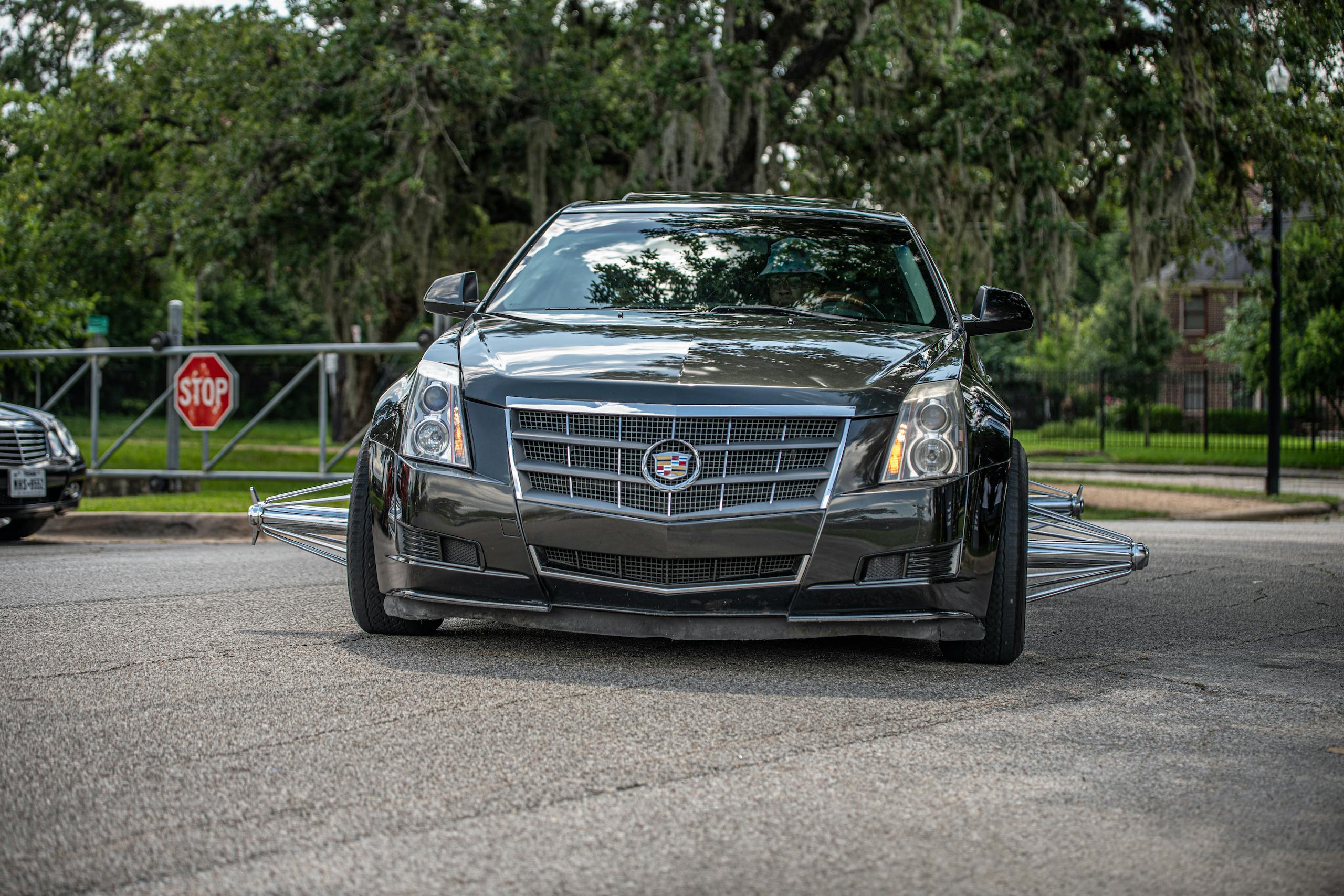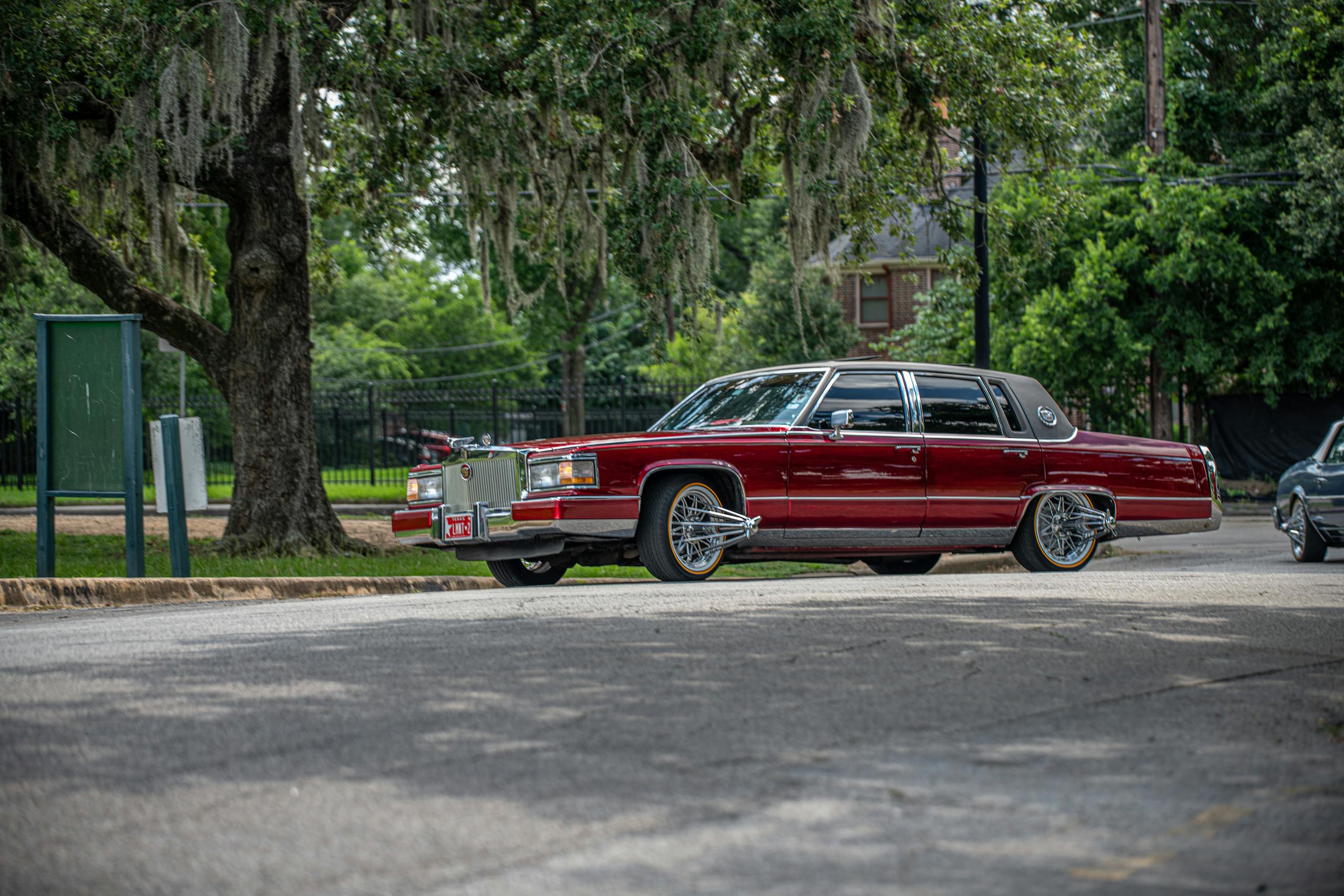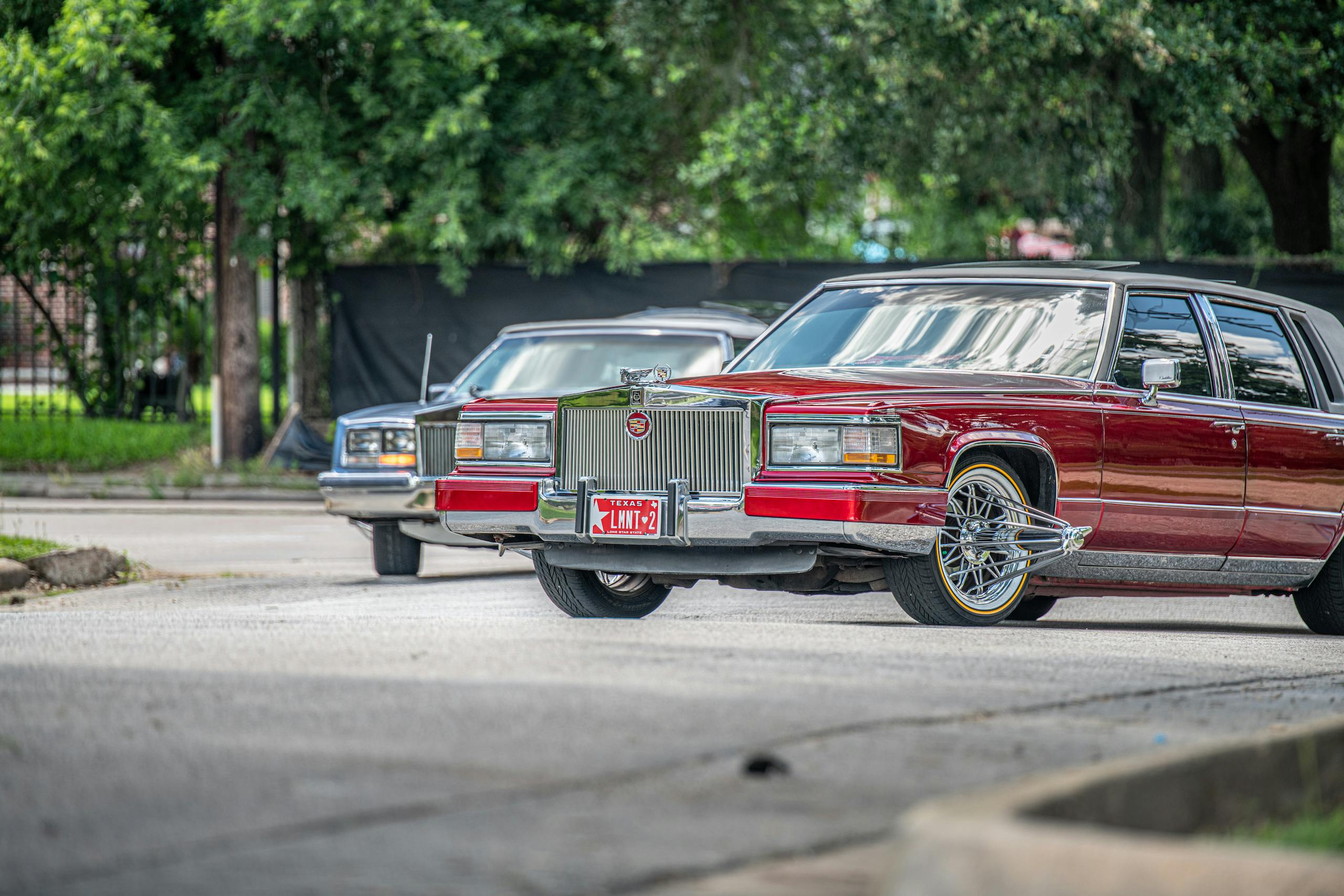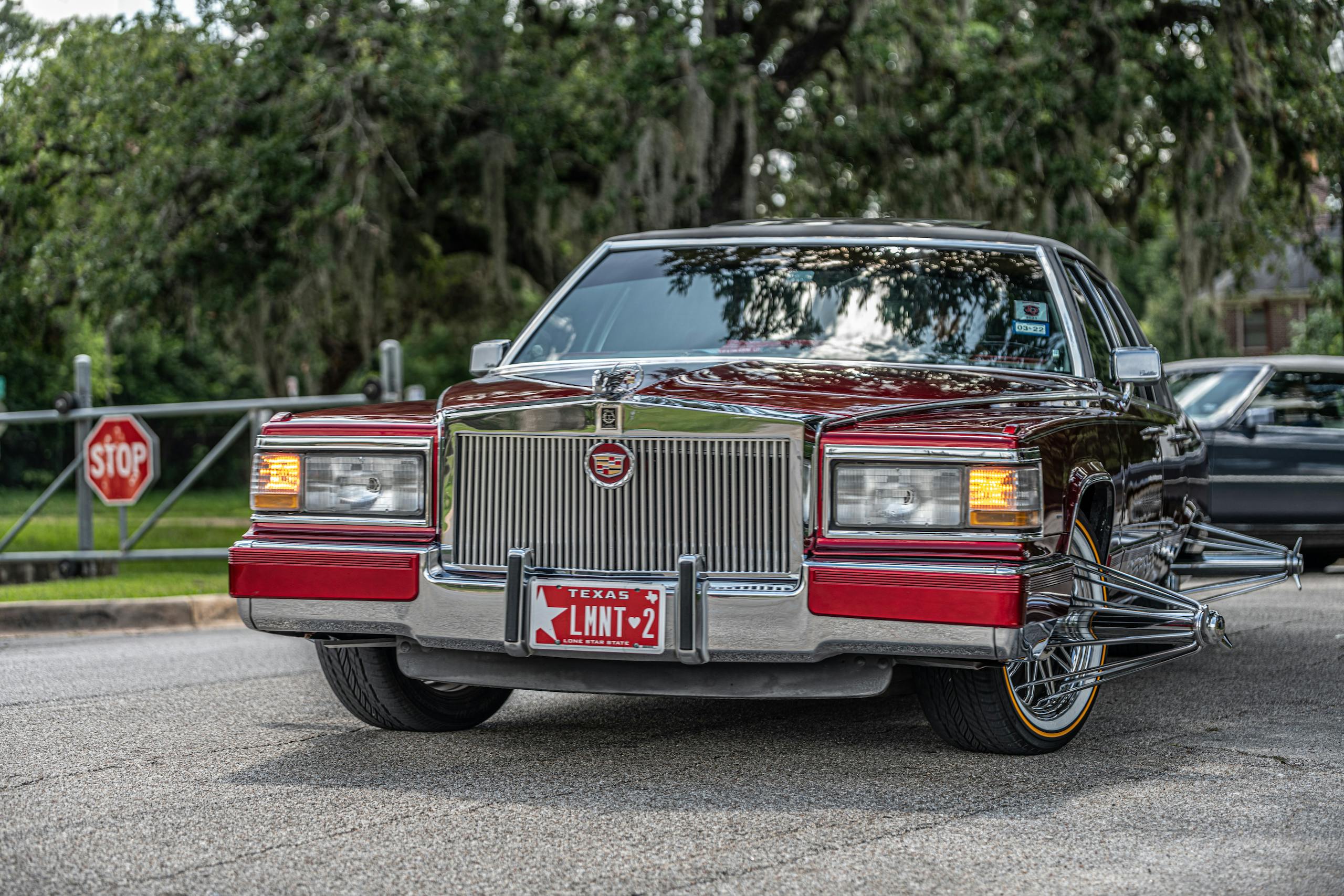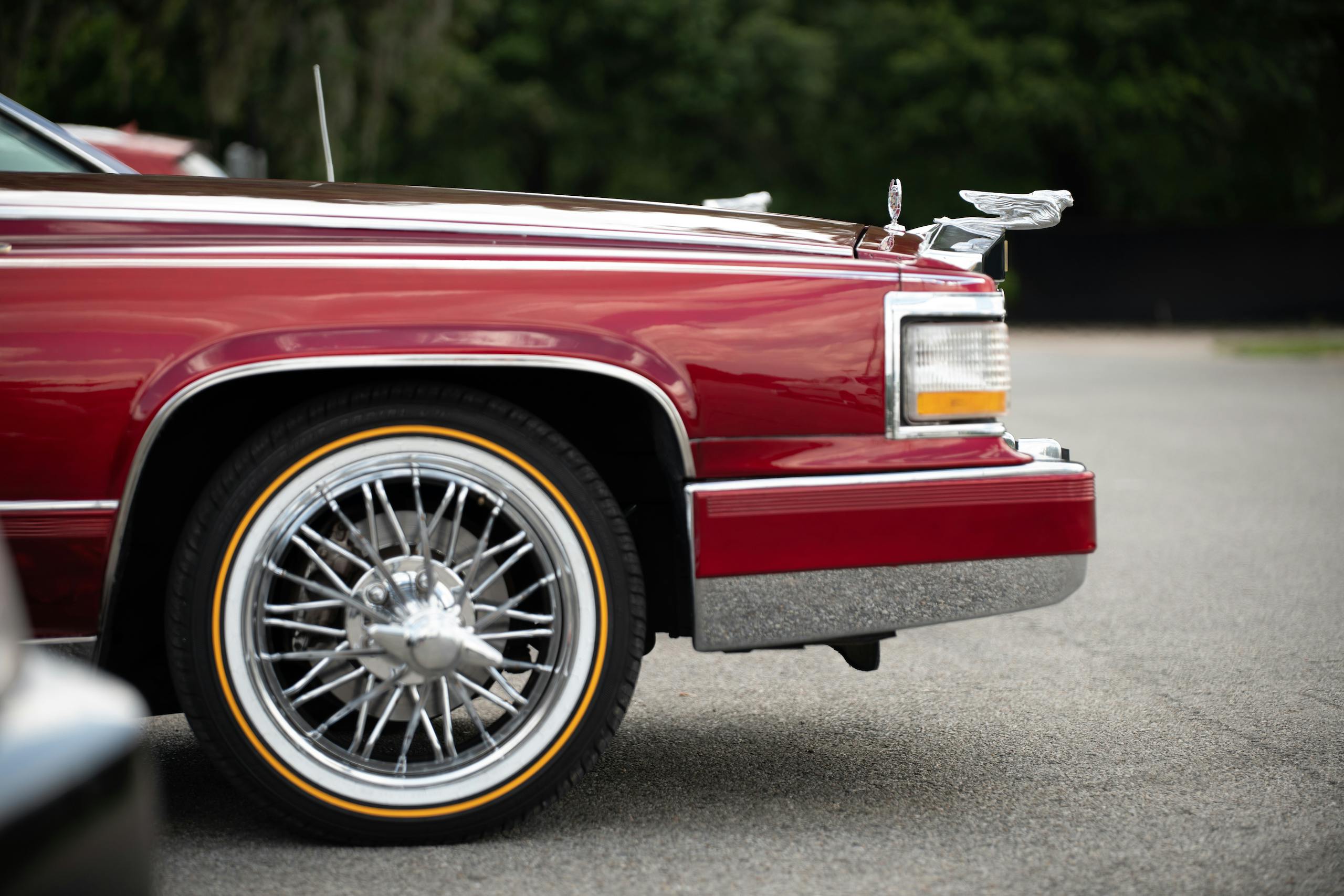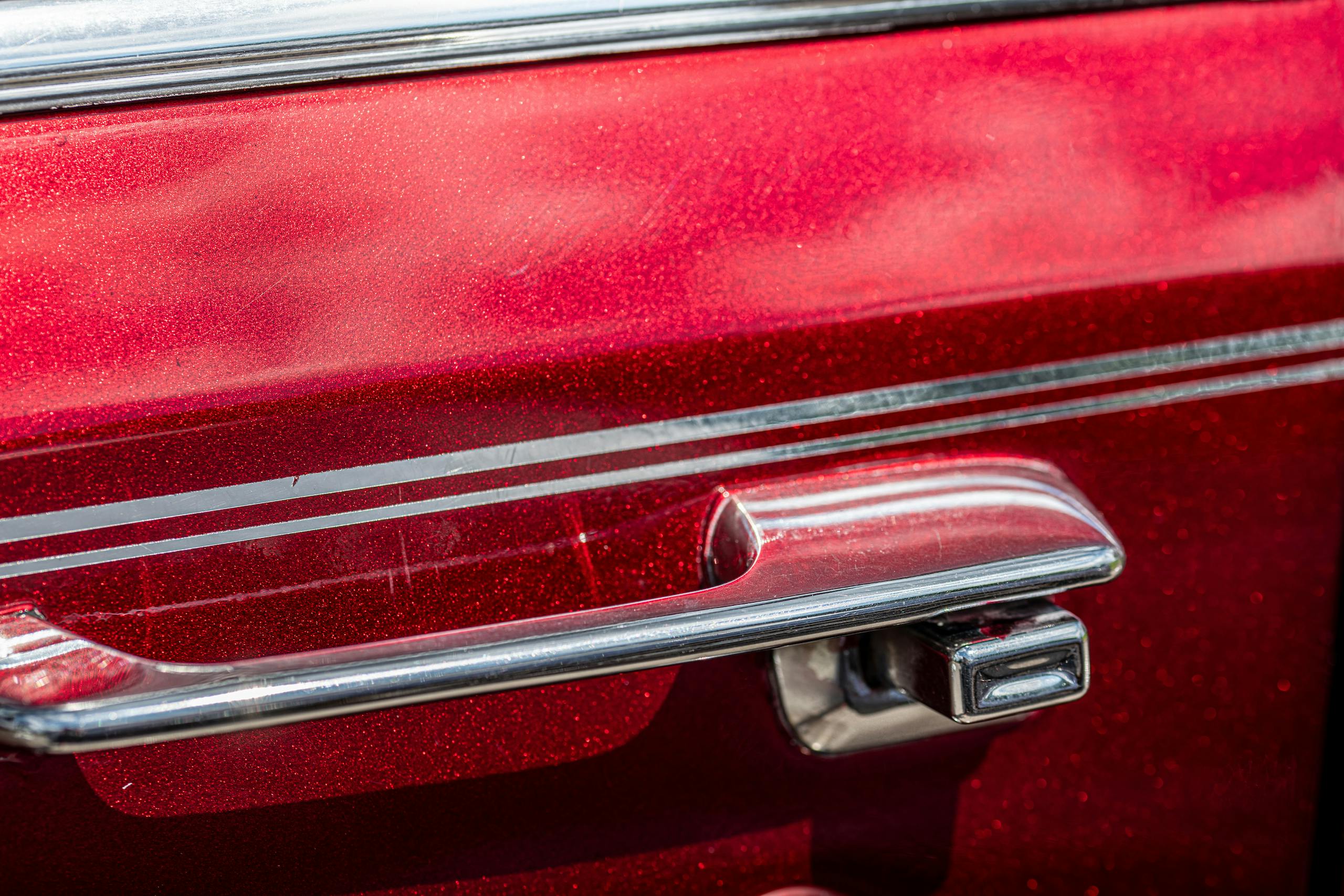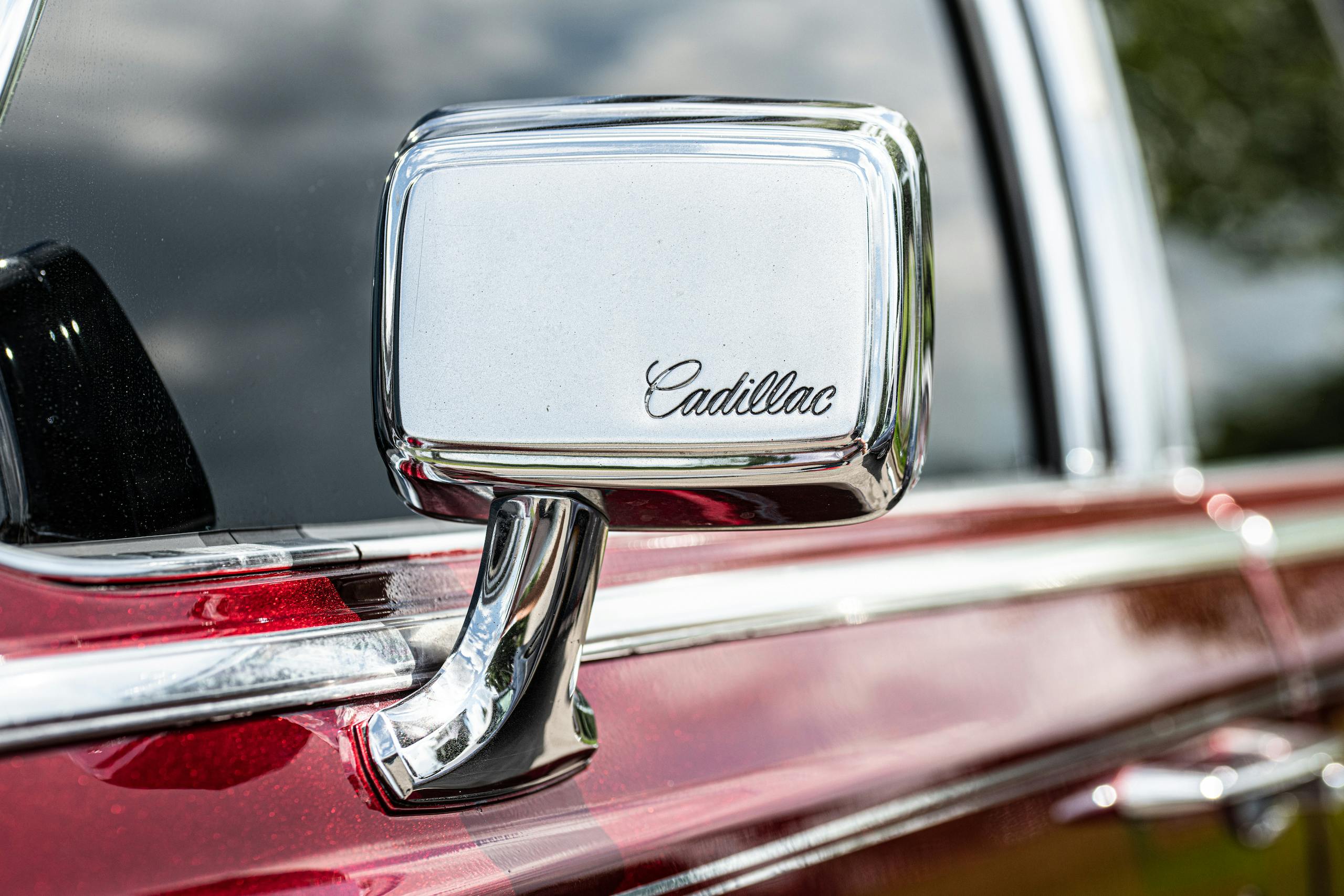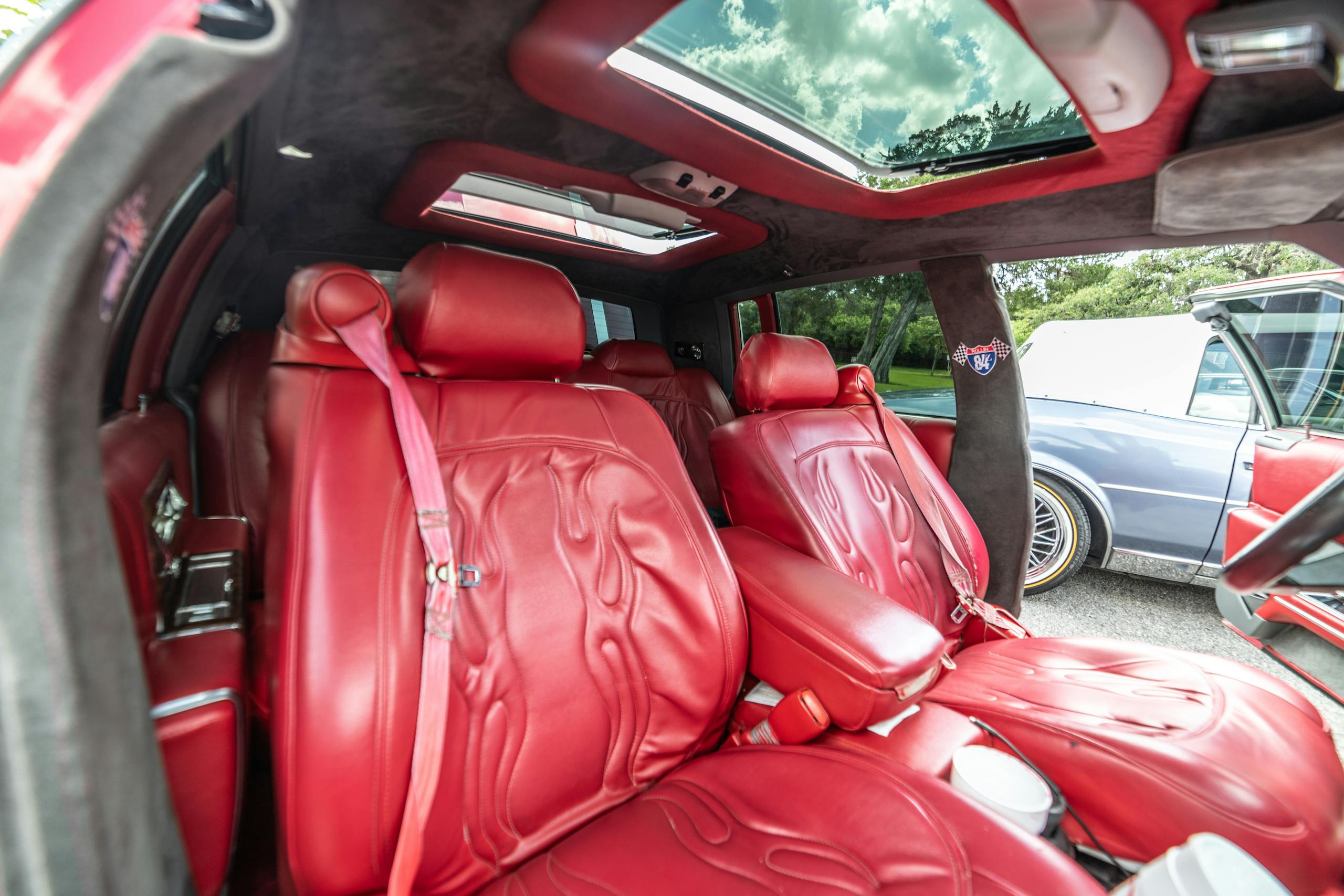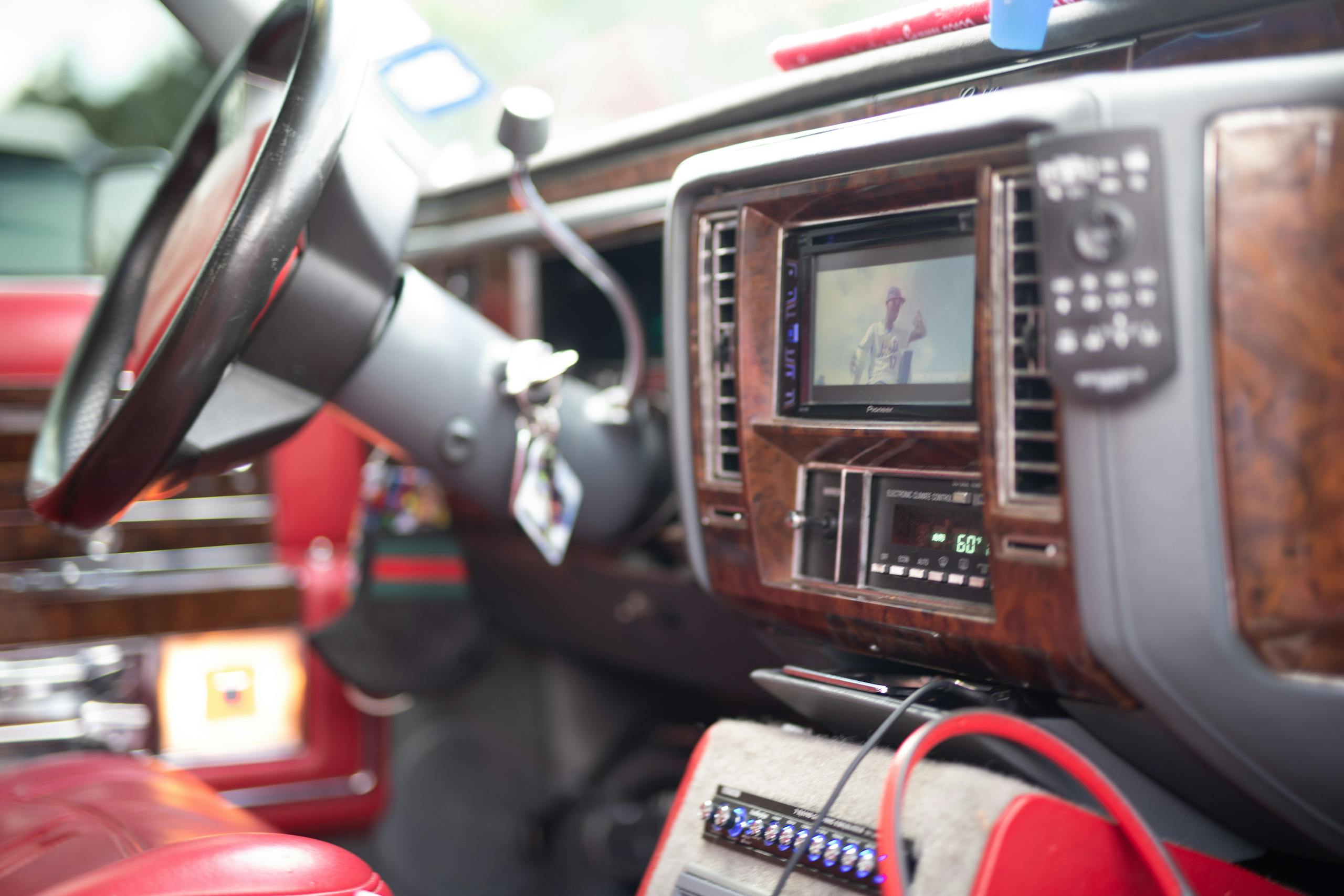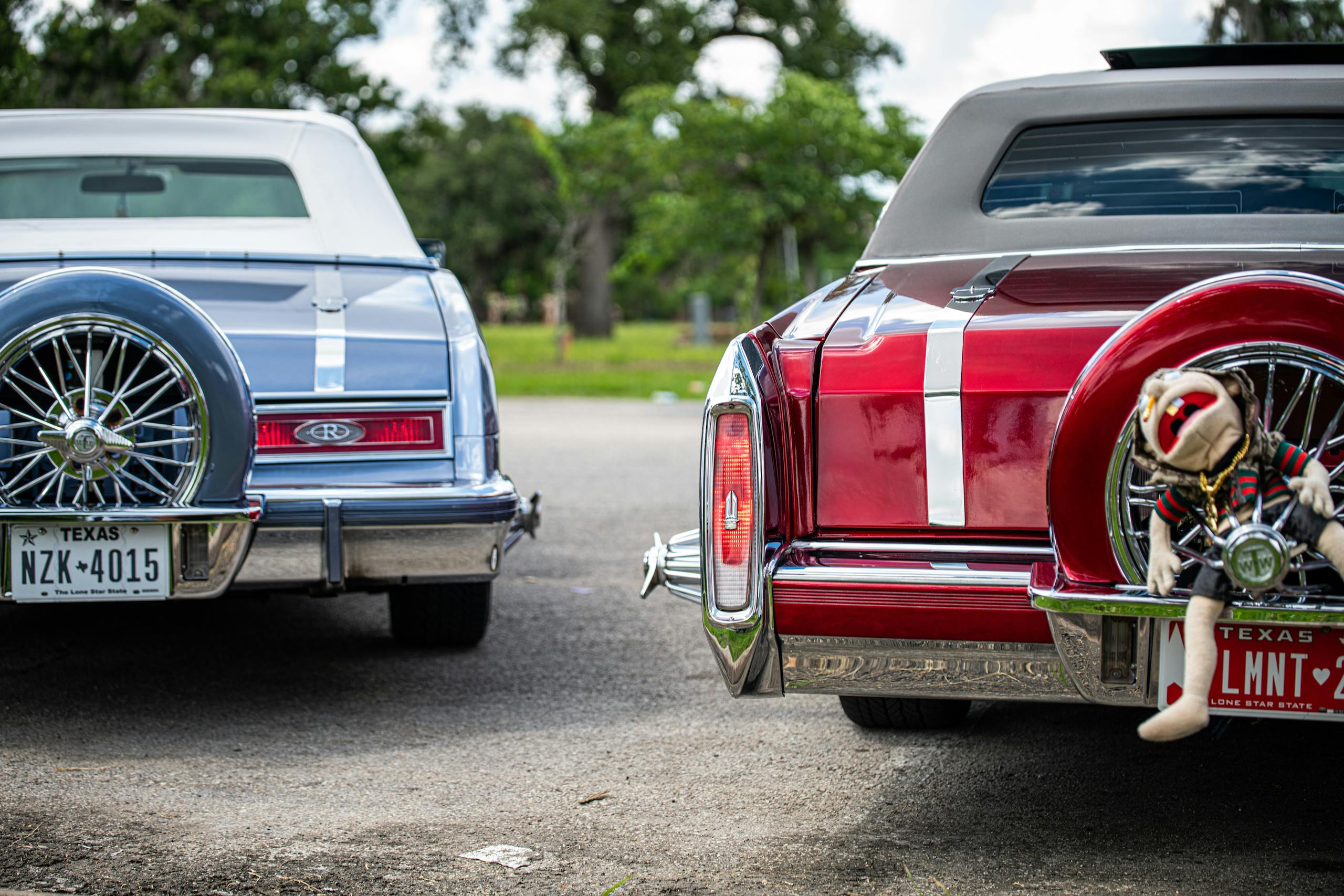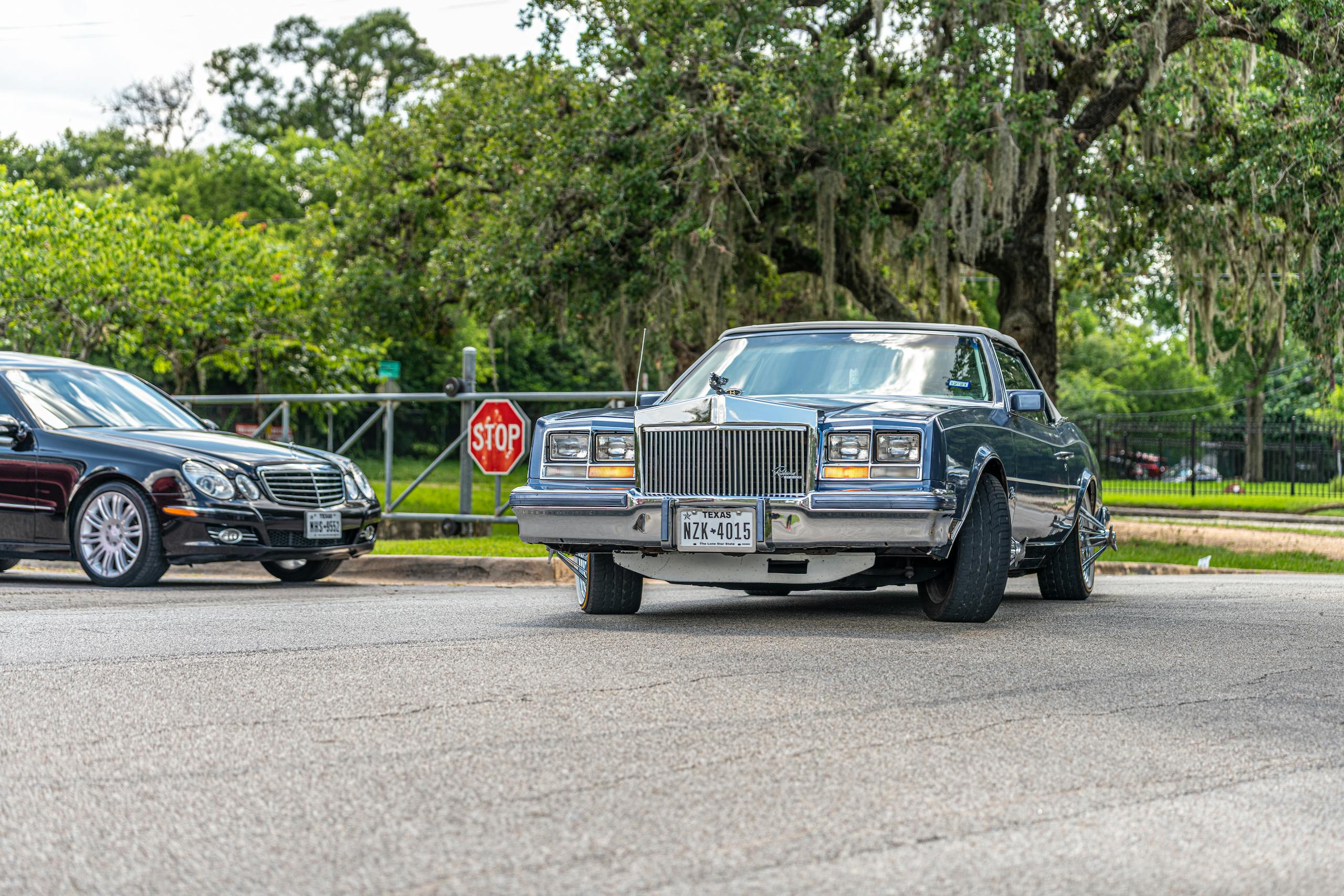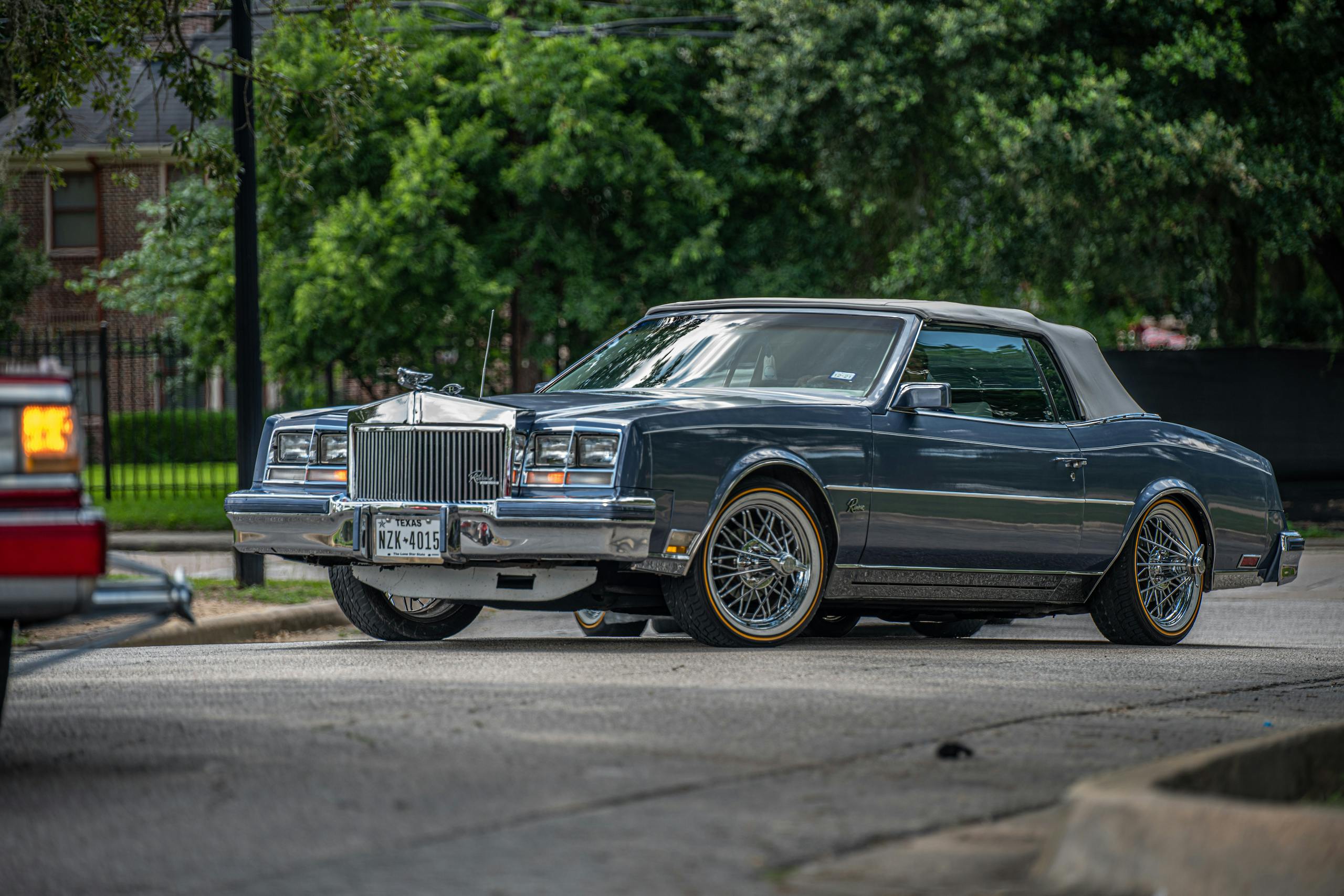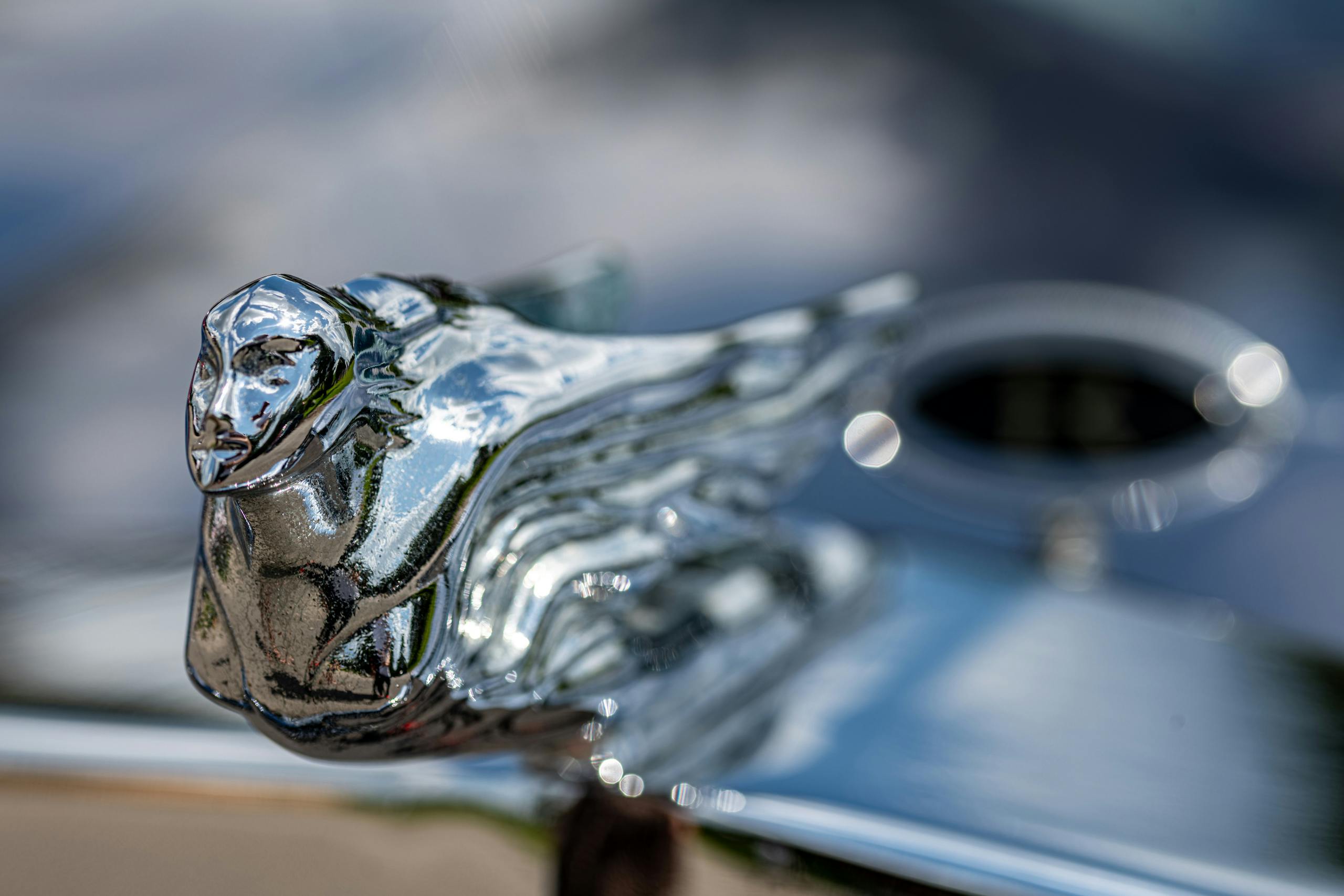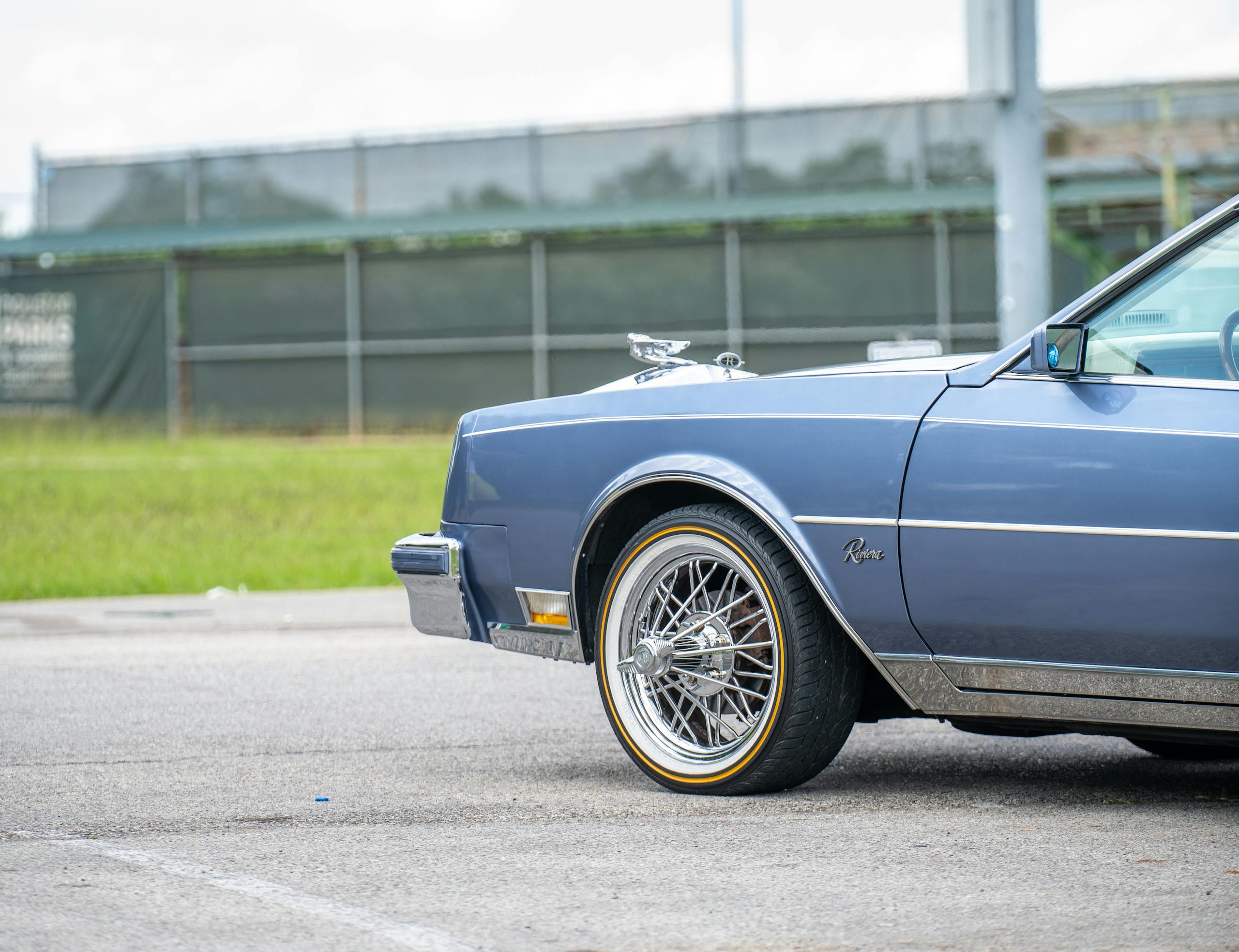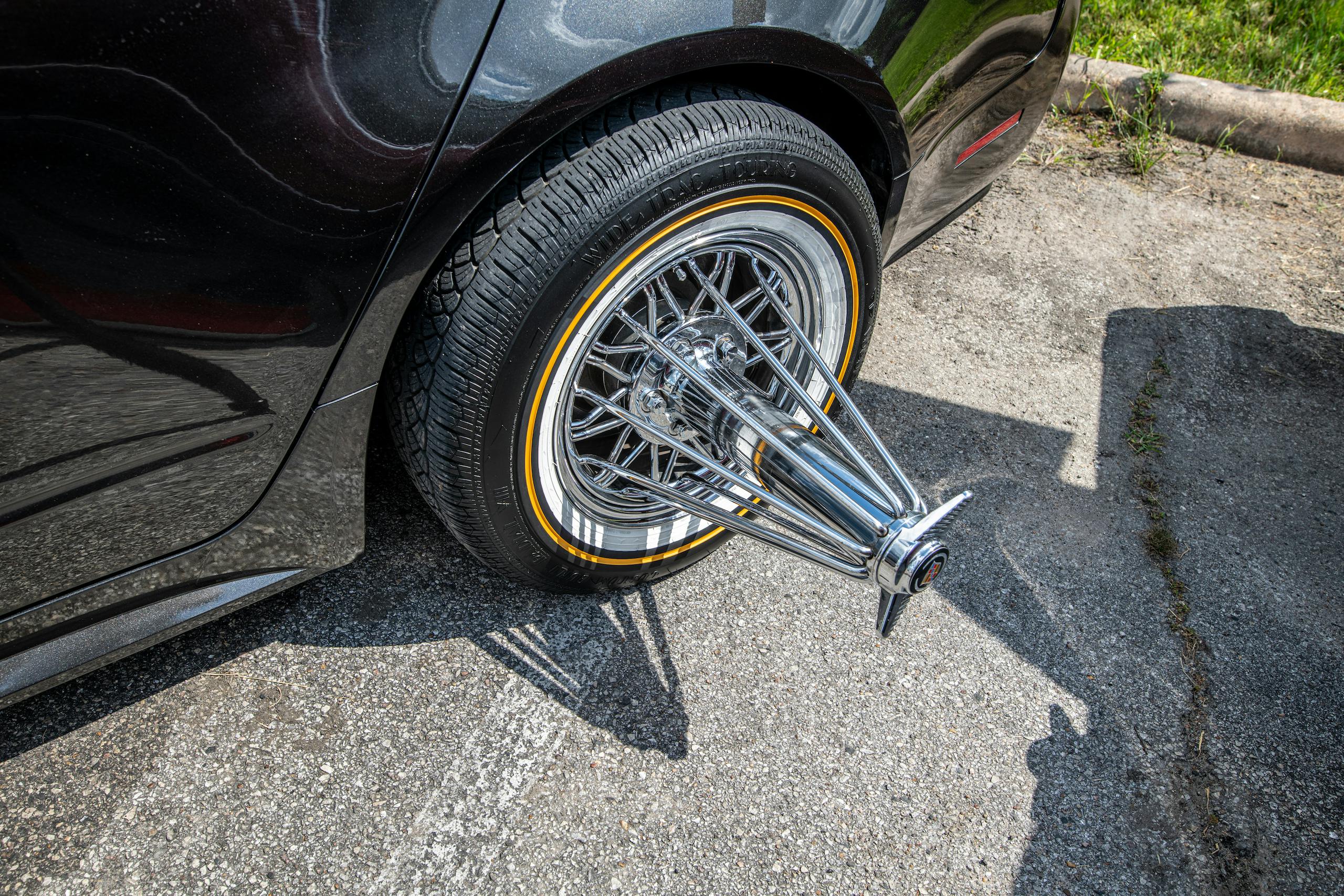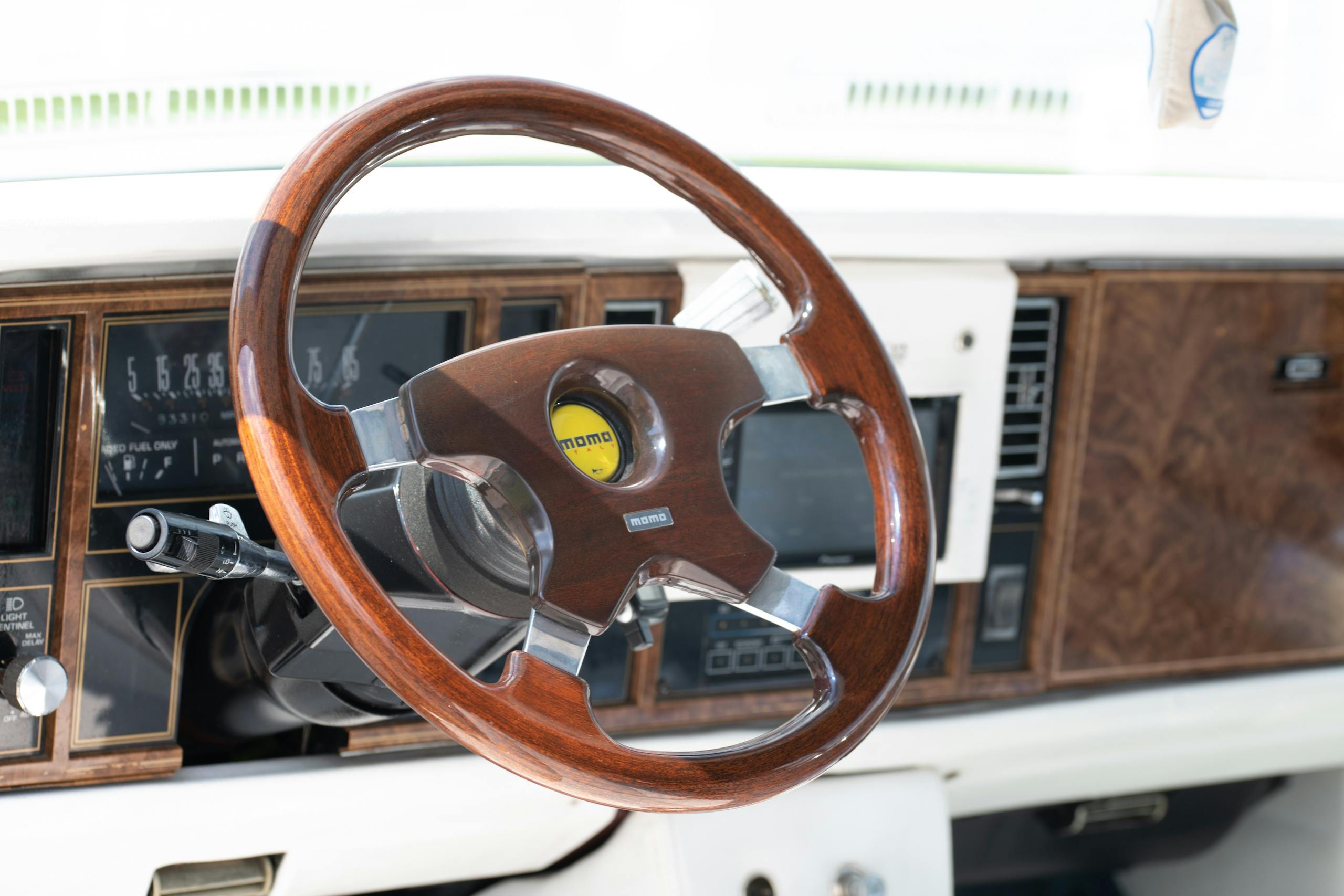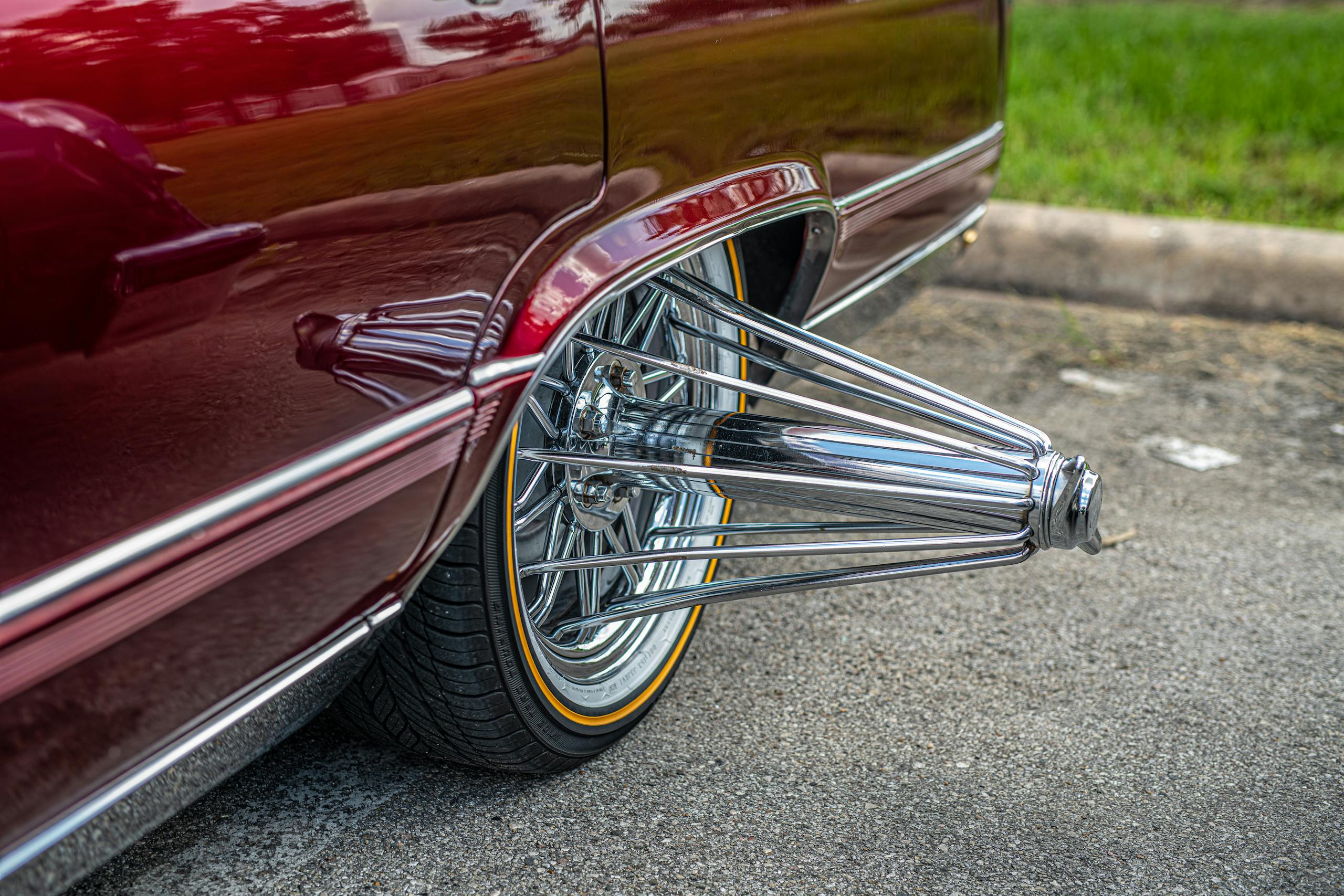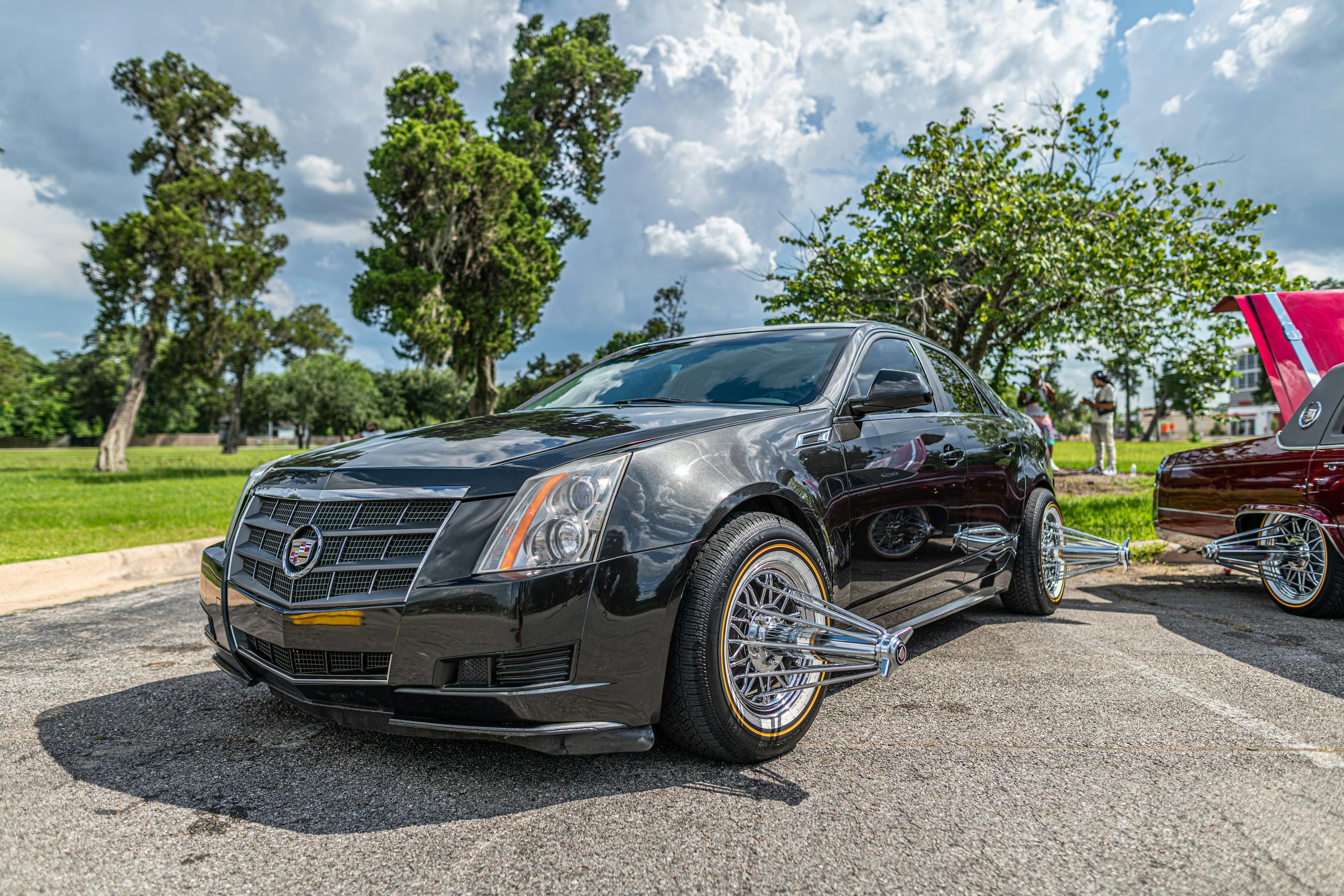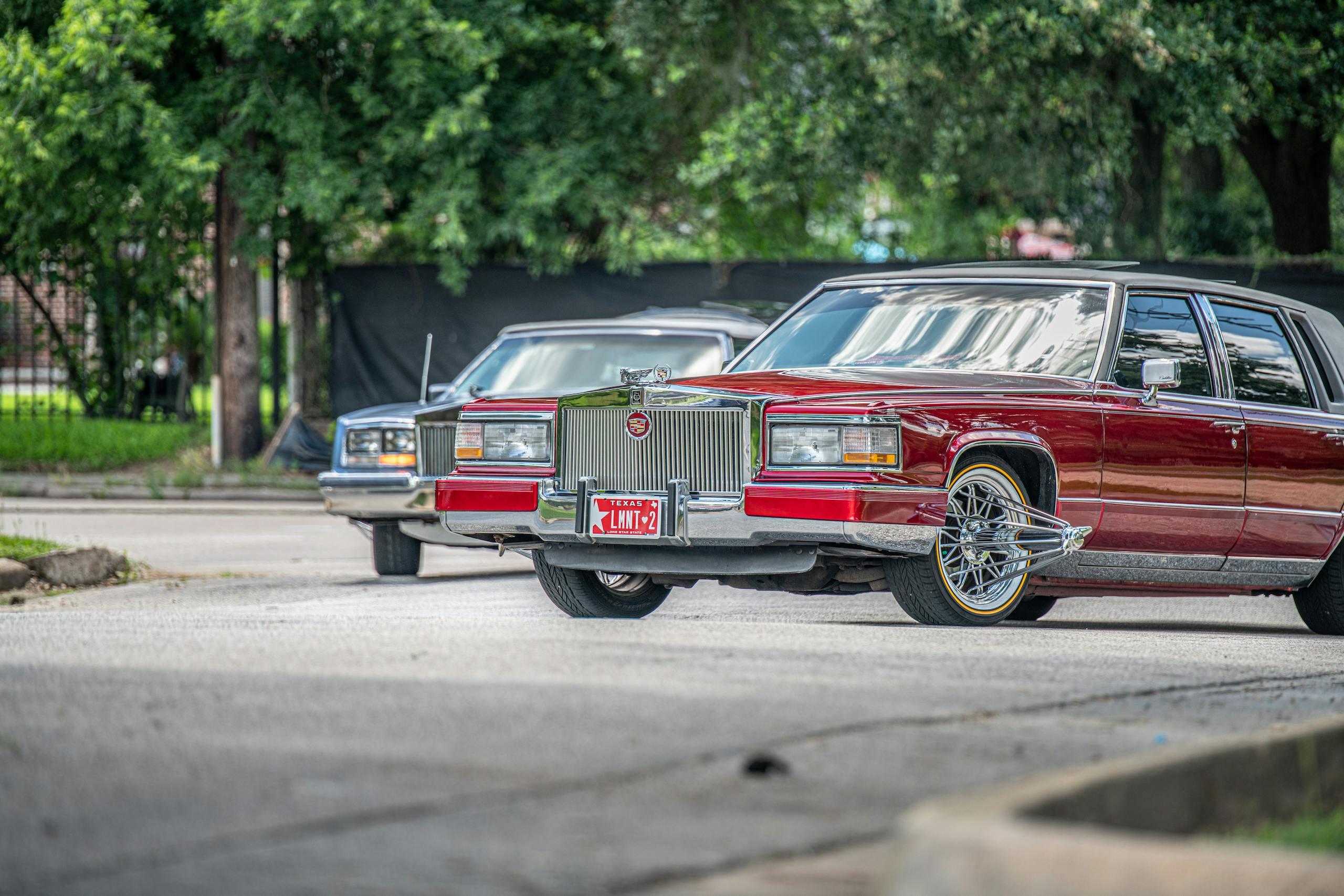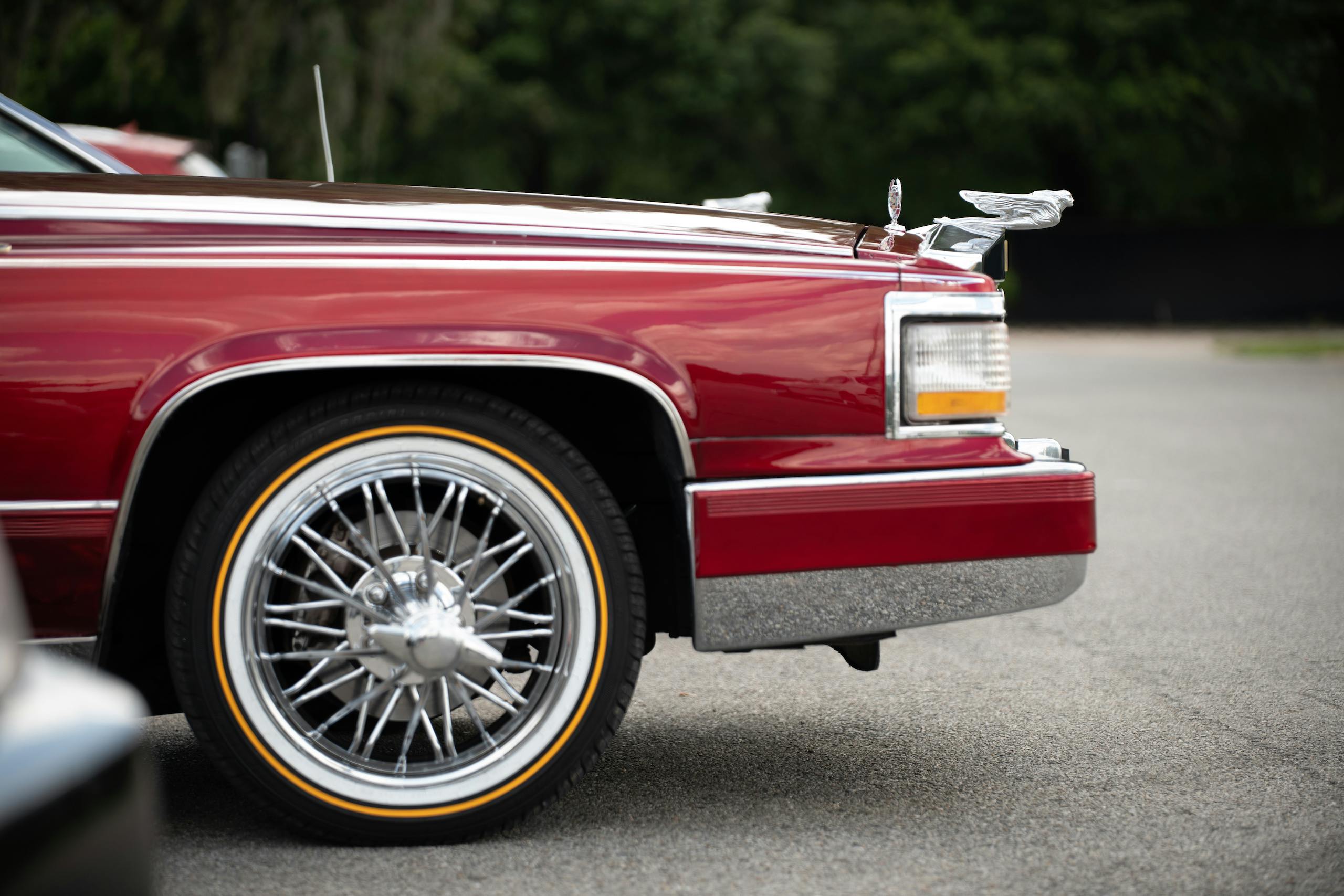Media | Articles
Elbows Out: Houston birthed the slabs, a car culture of its own
Editor’s note: When this was published in last month’s issue of Hagerty Drivers Club magazine, we received quite a few letters from people who felt that we were pushing a particular agenda. As the author of this piece, let me assure you that we have no such intentions. Our goal is to show our readers another kind of automotive enthusiasm. Yes, it’s controversial, and yes, it often falls afoul of the law—but haven’t we all looked back at the “outlaw” days of hot rodding and street racing with approval and even pleasure? I’d ask you to give these fellow enthusiasts a fair hearing. And as always, thank you for reading this site and for sharing our love of cars. — Jack Baruth
They call him “D-one Tha Chosen,” and today, his music is the soundtrack for countless different street scenes in Houston and elsewhere. In 1996, however, he was just a 10-year-old boy sitting in a candy-apple-red 1986 Lincoln Town Car, watching the plate-glass window of a fried-chicken restaurant shatter into a thousand pieces under the coordinated sonic assault of four high-powered, 18-inch subwoofers.
“Pat Lemon owned that car first,” recalls D-one, all these years later. “The man who was like a father to me, Darryl Williams—he had just gotten out of jail. So I was riding with him and Pat Lemon. We got to Frenchy’s in the Third Ward. Pat popped the trunk … if I’m lying, I’m flying, alright?” D-one says with a smile. He is tall, lean, charismatic. Attired in flawless street style, relaxed in the mid-rise office in southwest Houston where he signs artists and sells records. “When he popped that trunk and those 18s hit … he took down the whole front window of Frenchy’s.”
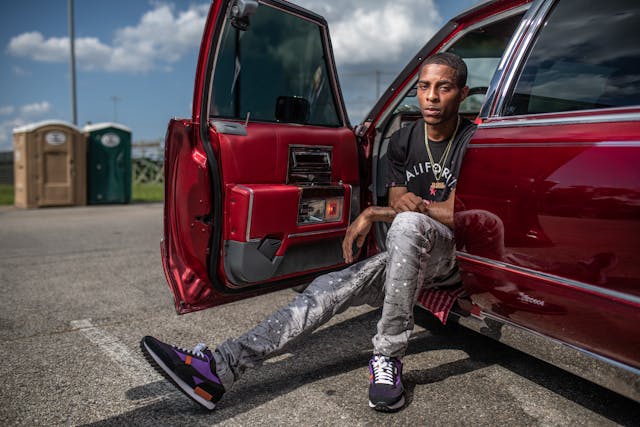
The Town Car was painted red for a most unusual reason: Its owner was affiliated with the infamous Crips gang. “Unusual,” because in Los Angeles and other locales, the Crips traditionally wear blue; in Houston, paradoxically, the Crips “rode red.” Their control of the streets was far from absolute, however. To have a red car on “swanger” wire wheels was a double provocation.
You could be killed for your gang affiliation, another dropped body in the slow burn of crack-fueled gang violence. Or you might get carjacked out of nowhere by someone who would throw your lifeless body to the curb, pull the swangers off your car and sell them, after having burned the rest.
Marketplace
Buy and sell classics with confidence
Not the best place to be, especially if you were 10 years old and subject to being caught in the crossfire. But it was also where the action was, the gravitational pull of which, to a young boy, is both stronger than any mother’s caution and older than epic poems of yore. “We rode in that car all day … and that was really the day that I fell in love with all of it,” D-one says. “The cars, the music—it started with that 1986 Town Car. It was one of the first slabs.”
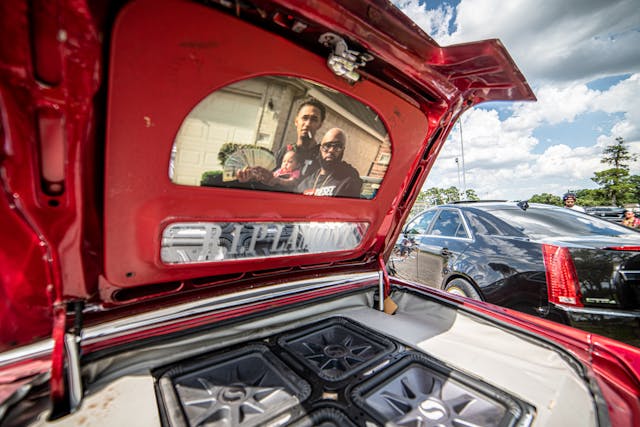
The exact definition of “slab” has been debated since the cars first rolled through the mean streets of Houston. Some said that slab stood for “Slow, Loud, and Bangin’.” The origin of the name, however, is simpler than that: A slab is a custom car that you put out on the concrete slab of a Houston freeway. Not a lowrider, and not a pimpmobile, though there are common threads of style and sourcing that run through all three of these genres. A slab is a vehicle in which you are seen—and heard. It has a unique look. Not only can it shake the windows; it can shatter them. No two slabs are alike. And you always know who is behind the wheel. It’s a modern coat of arms, the livery of a street nobility, and honi soit qui mal y pense, as King Arthur and his knights were wont to say.
D-one made it home safely that night in 1996, and every night thereafter. He was, unfortunately, the only passenger in that slab on that day who would survive to the present. Pat Lemon, the car’s owner, was killed on the street shortly after that seminal afternoon with D-one. From Lemon, the Lincoln passed into the hands of Houston rapper Fat Pat. It’s featured in his music video for “Tops Drop;” a long, lean, vinyl-roofed presence among Eldorados and Broughams and aero- headlamp Buick Regals. Almost everyone is on the swanger wheels, the chrome spokes extending past the wheel wells and out into your space. Elbows out. Staking a claim on the street.

In February 1998, Fat Pat was shot and killed at age 27 by an unknown gunman. The next owner of the car was reportedly another local rapper, also shot and killed. “After that,” D-one relates, “it was sitting on Wyoming and South Park for a minute. But … they burned it. You know, it was like a death car. Everybody who owned that car got shot.”
That was the end of the road for what was arguably the most famous of the early slabs. But the slab scene? It was just getting started.
In the beginning
In the beginning was the ’83, and the ’83 was with the Cadillac Eldorado. That razor-edged personal luxury coupe had been downsized for 1979 in triumphal fashion. After four years on the market, however, the Eldo’s appeal began to wane. Knowing the proclivities of their customer base, some Cadillac dealer accessory managers tapped Cragar to supply a variant of its “Star” wire wheel for 1983 Eldorados.
Customers of the era would have immediately noticed two differences between the plastic-wire wheel covers and the real ones. Viewing the car in profile, set behind the wires of the Cragar wheels, one could see the Eldorado’s four-wheel disc brakes. More important, the centers of the real wire wheels extended about 4 inches proud of the wheel rim and tire sidewall. This meant that people on the street could discern the Star wheels from all sides of the vehicle. The wheels had presence.
They were a success; for 1984, the Cragars returned with a slightly different design and a little bit more of that “poke” extending out past the wheel. After that, the wheels were no longer offered, likely because the effort involved in servicing tubeless wire wheels built by a third-party vendor exceeded the interest and/or capabilities of Cadillac dealers. As the Cragar-equipped Eldorados passed into the hands of second and third owners, the wheels quickly became de rigueur on urban streets.
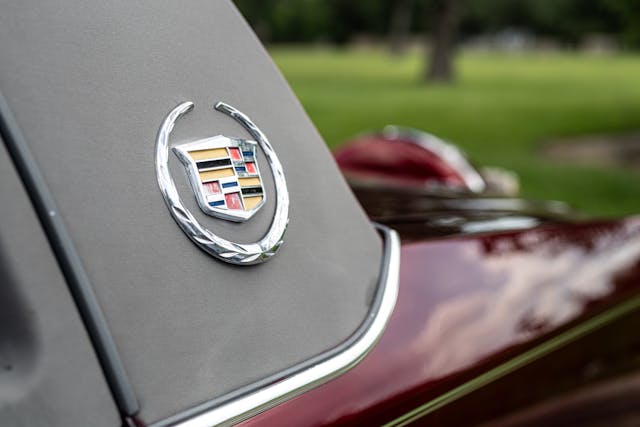
Houston was no exception. Here, the heady aphrodisiac of seemingly limitless oil money had ensured a steady flow of loaded Cadillacs from showroom to mansion to suburb to street. Many dealers reworked the cars in full neoclassic fashion, with Rolls-Royce-style aftermarket grilles (a popular version had a superimposed pair of capital-C letters echoing the double-R, with “CLASSIC – CADILLAC” in place of the Crewe original text) and nonfunctional Continental kits featuring fiberglass faux spare wheels hanging off the rear bumper.
That oil boom was followed in ghoulish fashion by an oil bust and the explosive arrival of crack cocaine on the streets of Houston. The most successful drug dealers of the era gravitated toward those elaborately styled 1980s Eldorados, the same way that New York City pimps in the early 1970s had been attracted to customized “El Dogs” by the likes of Wisco and Les Dunham more than a decade previously. Those ’83s and ’84s were the ur-slab, and their revered trinity of Cadillac badge, elbows-out wire wheels, and Continental kit went on to define the trend for the next 10 years.

“To be a real slab,” D-one clarifies, “it almost has to be a Cadillac.” Most of the early slabs were Eldorados with the Biarritz package, although in most cases the signature stainless-steel roof panel of the Biarritz gave way to a convertible top or a faux-convertible fabric cover. Full-size, C-body Cadillacs were also popular, with particular respect paid to the 1990–92 Brougham model and its flush-mounted, corner-wrapped headlamps. The appeal of the “Brougham nose” was so strong that several shops started adapting them to other GM cars. While this modification is a straight swap onto any B- or C-body full-sizer, to make it work on the narrower E-body Eldorado and Seville requires some true artistry, attenuating the grille in a manner that doesn’t look obvious, with the headlights fitted properly in the available space.
Any well-attended slab party in Houston creates a sort of uncanny-valley effect for Cadillac fanciers; you might see five or six cars in a row that all look like 1992 Broughams from dead ahead. As they pass, however, you’ll see that, in reality, they are Eldorado convertibles, Coupe de Villes, or Oldsmobile Ninety-Eights. What’s more prestigious, we ask D-one: a flawless Brougham conversion on a Ninety-Eight, or an original Cadillac? “It’s got to be the real thing for me,” he states. “The rest, you’re just trying to put the Cadillac style on it.”

By the early 2000s, there was a complete cottage industry of tiny customization shops to apply the candy-colored paint and Continental kits to the car of your choice. Rarely did a shop offer the whole package to a potential customer or even serve as a general contractor coordinating a build. Instead, the cars were built in fits and starts as their owners came up with the necessary funds to keep things going, rolling from shop to shop on borrowed steel wheels for a little trim here, a little upholstery there, paint somewhere else.
You couldn’t call your slab finished until you had a bumpin’ sound system, preferably accessed via a trunk that rose hydraulically on custom linkages to display a plexiglass jewel box of amplifiers and speakers. Ideally, you would have a message under the trunklid. It could be boastful: UR DREAMS – MY REALITY. Or meant to show affiliation: SOUTH BANK STILL STUNTIN. Even thoughtfully reflective: IT DON’T HURT TO FORGIVE. With that done, it would be time to finish the car by finding an appropriate set of wheels.
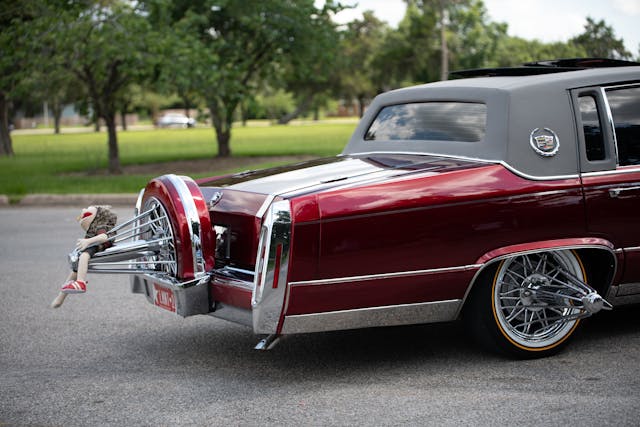
Cragar Stars were far more valuable on the street than were the Eldorados to which they’d originally been fitted. One well-known customizer estimated that there were as few as 50 sets of Eldorado wheels in circulation by the beginning of this century. To have a set of 83s or 84s—by then, they were known by their production year—was to attain a height of social felicity rarely seen outside of rapper or athlete status. It also meant you stood a good chance of being killed for your wheels. In those years, the murder rate in Houston was triple the national average. Who knows how many of those deaths started with a covetous glance at a set of 84s, bolted to a ragtop Eldorado? The supply was limited; the demand was murderous.
Something had to give.
“We Took the Bus to a P.O. Box”
Eddie Kennedy runs 3rd Coast Customs out of a weathered steel building dropped between homes on an otherwise residential street. He’s been here for more than two decades in a car-customization career that spans three. Much of the shop is thick with months’ worth of dust; he apologizes early and often for this state of affairs during his interview. Yet his work is known for being nearly flawless, particularly when it comes to Brougham conversions. “The parts are so hard to get that I started fabricating my own fiberglass fascia and stainless-steel grilles,” he explains. “But you still need the headlights, and they’re $1500 each in any junkyard that still has them.”
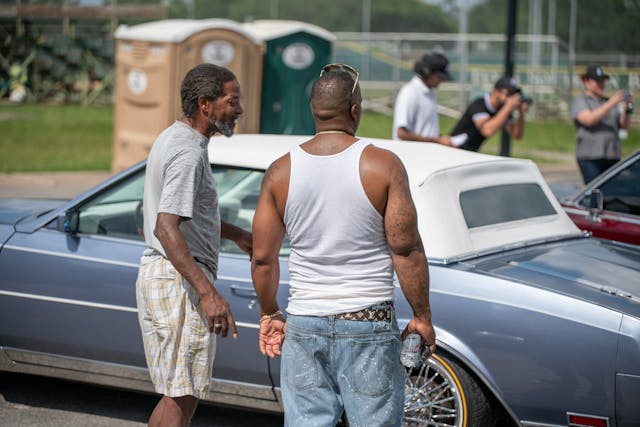
Kennedy was also front and center for what could best be described as a Swanger Crisis of sorts. “There was an older guy here who was repairing and rechroming the 83s and 84s, but he couldn’t do enough. By 1998, you could easily get killed just for owning a set,” Kennedy says. “You couldn’t be a regular 9-to-5 guy and own these wheels. Had to be an outlaw, a dealer. And even they couldn’t ride alone on the streets. So they started going in packs. And they painted their cars the same color. So you’d know their affiliation.”
The Swanger Crisis took another turn, when in 2007, a company called Texan Wire Wheels started making all-steel replicas of the original Cragar wires. Kennedy heard a rumor early on that someone was remaking the wheels, but all he had was a P.O. Box number in California. He did the obvious thing: he took a bus to California and staked out the post office until the party in question came to get their mail. Kennedy’s work as perhaps the first Texan dealer did much to resolve the crisis. “We ended up selling the first 10 sets of wheels,” he recalls. “It was almost like a black market.” The deadly demand for original Cragars disappeared as slab fans gravitated toward the newest and most outrageous Texans. People without hard and fast criminal affiliations started building and driving slabs, although they were careful to choose colors that were either neutral or particular to a general region rather than a gang.
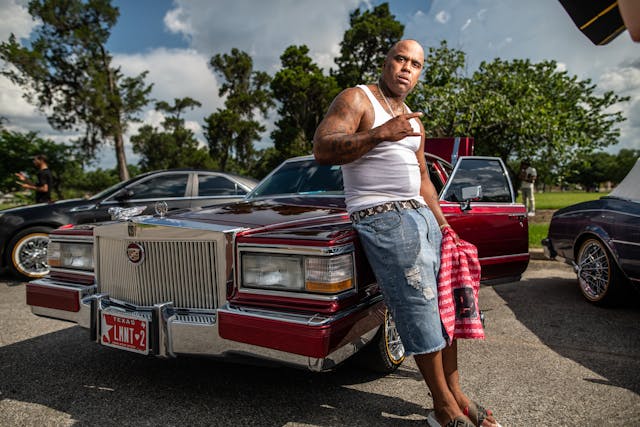
Over the years, the protrusion of the hubs increased through Super, Extreme, Orangatang, and finally Giraffe poke. Giraffe pokes have a full 24 inches of extension past the wheel rim, adding 4 feet to the already substantial width of a full-size GM sedan. “I’m 50 this year, and I don’t care for the 15-inch and 24-inch poke,” admits Kennedy. “The wheels wrap around each other in traffic, ruin the cars. But the younger generation wants the longest poke, at the highest price. Ten thousand dollars for Giraffe poke.”

The cost of the most extreme swangers isn’t the only deterrent. In summer 2021, not a single shop in Houston had a set in stock. “Pay me now, maybe you could get them in October, but probably not,” one salesman admits. As a result, the heat is once again turning up on the people who drive slabs. To “ride one-deep,” or to drive unaccompanied on these wheels, is riskier than BASE jumping with a discount parachute. To make matters worse, the increasing presence of Giraffe pokes on Houston freeways is extremely unpopular with the 9-to-5 crowd, leading to more pressure from the police. Cops are writing tickets and confiscating cars. “And once they have your car,” D-one notes, “you won’t get it back, because down here a lot of cars change hands without any paperwork. The name on your title might be the man who owned the car 20 years ago. Is he gonna get it out of impound for you?”
Leaders of the New School
So much of today’s slab culture would be familiar to any 20th-century hot-rodder, from the police-related drama to parts availability to the perpetual ascendancy of General Motors in the scene. To that list, you can now add that age-old source of societal friction, “generational conflict.” To the original slabbers, most of whom are now between 40 and 60 years old, the definition of the hobby hasn’t changed one bit. It’s still a Cadillac on 84-ish wire wheels with a Continental kit, Vogue white-wall tires, and the candy-colored paint job of your click. (In Houston, the reader will note, the word “clique” is spelled the way it sounds, as exemplified with local hip-hop pioneers Screwed Up Click, or S.U.C. for short.)
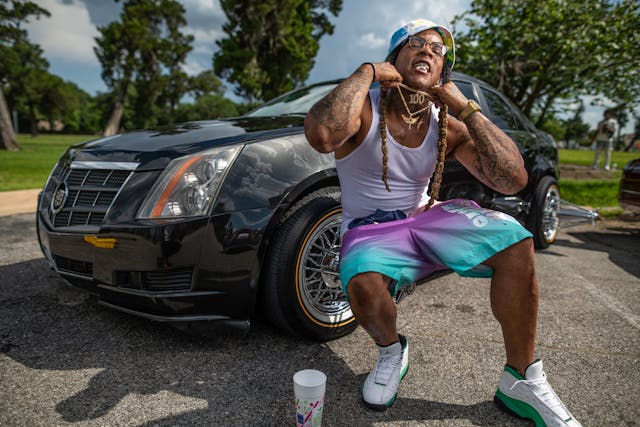
A new generation of slabbers has consistently challenged and redefined what slab should mean. The wheels, the sound systems, the flashy attitude? Still mandatory. But when the GM Class of ’77 and its descendants became too hard to find, the youngsters adapted and started building W-body Impalas, LaCrosses, and Grand Prixs as slabs. When those became scarce, another group began to focus on late-model versions of the Chrysler 300 and the Dodge Charger. On the day we interviewed Kennedy, he was working on a fully modified, two-year-old Cadillac XTS. It had candy-purple paint, a motorized Continental kit, a redyed leather interior in a scheme best understood as “Goober Grape,” and 15-inch poke Texans with Vogues. Yet Kennedy was reluctant to call it by the traditional name. “I guess,” he says with a sigh, “this is what people are seeing as a slab nowadays.”
Indeed, after attending any event where the ’83 Eldorados and ’90 Broughams are out in force, wearing their perfectly judged “box” styling and covering roughly 221 by 76 inches of concrete in appropriately menacing fashion, it’s hard not to see new-generation slabs built on the XTS or Charger platform as children of a lesser god. Yet to do so is to miss the point by more than a little.

At some phase of its historical development, every automotive subculture comes to a turning point: Is it the blues or is it hip-hop? The blues is a time-capsule scene, admitting of no significant changes or enhancements since Peter Green signed off from Fleetwood Mac in the spring of 1970. It is primarily understood and enjoyed by people who have a historical perspective. Young people are allergic to such a viewpoint, the same way they are allergic to Pat Boone or Chopin or Metallica. Hip-hop, on the other hand, is messy, occasionally embarrassing, and almost always unable to reach the artistic level of its original practitioners in the current day—but it is evolving, it is relevant.
Houston’s slab scene is its own unique definition of automotive enthusiasm. It is drenched in heresy, divorced from traditional taste, and liberally splattered with blood besides. Yet the arrival of a slab on the streets of Houston’s Third Ward is as electrifying, as important, as much of an event in 2021 as it was when Pat Lemon rolled up to Frenchy’s in his Town Car in 1996 and literally exploded on the scene. The slab’s past is rooted in tragedy, its present is rocked by controversy, and its future is as opaque as the hyper-tinted windows of an Impala slab rolling slowly past a potential rival. But it is completely, utterly, indisputably: alive.

